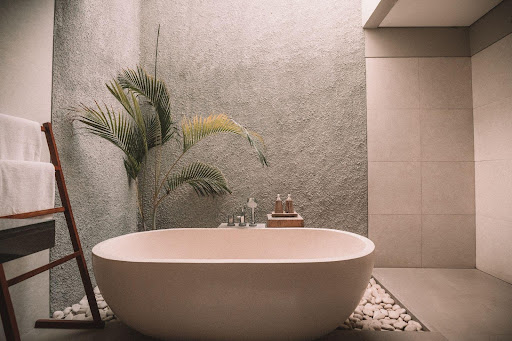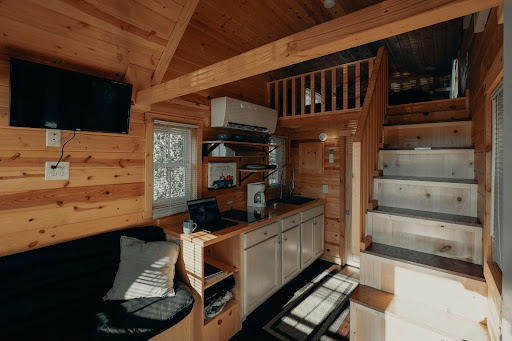
Battling bathroom mold and mildew is a familiar challenge for many homeowners. These unwelcome guests not only detract from the aesthetic appeal of your bathroom but also pose health risks. The warm, humid conditions prevalent in bathrooms create an ideal breeding ground for these fungi. In particular, areas with a humid climate, such as Jacksonville, Florida, face an increased struggle with this issue. The steam from showers and baths, combined with limited ventilation, makes bathrooms in such regions especially susceptible to mold and mildew infestation. Addressing this concern goes beyond maintaining a visually clean bathroom; it’s about ensuring a healthful living environment. In this blog, you will discover effective strategies to tackle this issue and more, so if you’re contending with mold and mildew problems at home, be sure to read until the end!
Understanding Mold and Mildew
Mold and mildew, though often used interchangeably, are not quite the same. Mold is a type of fungus that appears in various colors, including black, green, and white, and it tends to grow in patches. Mildew, on the other hand, is a kind of mold that appears as a thin, flat growth, usually white or gray. Both thrive in moist environments, making bathrooms a common hotspot for their growth. Understanding these distinctions is key to effectively tackling each problem.
Identifying Mold and Mildew in Your Bathroom
Identifying mold and mildew in your bathroom is the first step to combating them. Regular inspections are crucial, especially in areas like Jacksonville’s humid climate. Look for mold as fuzzy or slimy textures in corners or on grout, and mildew as powdery textures on damp surfaces. Even with diligent cleaning and mold removal, these fungi can make a comeback, underscoring the need for more permanent solutions.
Preventive Measures and Remodeling Solutions
While ensuring cleanliness and ventilation is crucial, there are instances where more substantial actions are required, particularly after addressing mold and mildew issues initially. This is where the specialized knowledge of a professional bathroom remodeling company becomes invaluable. For Jacksonville homeowners, seeking guidance from remodeling experts can make a significant difference. These professionals can assist in designing and installing bathrooms using materials and fixtures that minimize the chances of mold and mildew returning. For example, incorporating a new bathtub and fixtures designed for moisture control can effectively reduce the risk of future growth. Jacksonville bathroom remodel experts can improve the functionality of your bathroom while considering the city’s specific weather conditions.
Health Risks Associated with Bathroom Mold
The presence of mold and mildew in your bathroom is not just a cosmetic issue — it’s a health concern. Prolonged exposure to these fungi can lead to respiratory problems, allergic reactions, and other health issues, especially in children, older adults, and those with pre-existing health conditions. Symptoms can include coughing, sneezing, skin irritation, and in severe cases, even asthma attacks. Understanding these risks underscores the need for prompt action to remove and prevent mold and mildew.
Natural Solutions for Mold Removal
For those who prefer eco-friendly solutions, there are several natural methods to remove mold and mildew. Vinegar, for instance, is an excellent natural disinfectant. Spraying a mixture of vinegar and water directly on the affected areas and letting it sit for an hour before wiping it off can effectively kill mold. Similarly, baking soda mixed with water or vinegar can be used as a non-toxic scrub to clean moldy surfaces. Another natural alternative is tea tree oil, known for its antifungal properties, which can be mixed with water and sprayed onto the mold. These natural remedies are not only effective but also safe for the environment and your family’s health.
Chemical Cleaners for Stubborn Mold
When natural methods fall short, especially in cases of stubborn mold, chemical cleaners become necessary. Products containing bleach or ammonia are particularly effective. However, it’s vital to use them with caution. Ventilation is key when applying these chemicals to prevent inhaling fumes. Also, never mix bleach with ammonia or other cleaners, as this can produce dangerous gases. Safety should be your top priority when using harsh chemicals, including wearing gloves and ensuring the room is well-ventilated.
The Role of Humidity Control in Preventing Mold
Controlling humidity is a pivotal strategy in combating mold and mildew in the bathroom. High humidity levels provide the perfect environment for these fungi to thrive. To reduce humidity, consider using a dehumidifier or an exhaust fan, particularly during and after showers or baths. Additionally, keeping the bathroom door open when not in use can improve air circulation, further reducing humidity levels. Simple actions like using a squeegee to remove excess water from shower walls can also make a significant difference.
Long-term Maintenance Tips
Maintaining a mold-free bathroom requires consistent effort. Regular cleaning and inspections are key. Set a routine for cleaning your bathroom weekly with mild cleaners and inspect for signs of mold or mildew growth. Pay special attention to areas that are often wet, like the shower and sink. Replacing items such as shower curtains and bathmats periodically can also help prevent mold buildup. Stay alert to any water leaks or damage, as these can quickly lead to mold problems if not addressed.
Innovations in Mold-resistant Bathroom Materials
Advances in technology have led to the development of mold-resistant materials, which can be particularly useful during bathroom renovations. Mold-resistant paints, for instance, are formulated to resist moisture and prevent mold growth. Similarly, there are now tiles and grouts available that are treated to be mold-resistant. These materials can be an excellent investment, especially in areas prone to high humidity, as they offer an additional line of defense against mold and mildew.
Conclusion
Mold and mildew in bathrooms are not just unsightly, but they can also pose health risks. Tackling this issue requires a combination of proactive measures, regular maintenance, and sometimes professional intervention. From natural cleaning solutions to the use of advanced mold-resistant materials, there are numerous ways to combat these problems. Consistency in your efforts is key.
Regular cleaning, humidity control, and staying vigilant against potential mold growth can go a long way in maintaining a healthy and mold-free bathroom environment. In cases of severe infestations or during renovations, don’t hesitate to consult professionals who can provide tailored solutions suitable for your specific needs and local climate conditions. With the right approach, you can keep your bathroom a clean, healthy, and inviting space.







